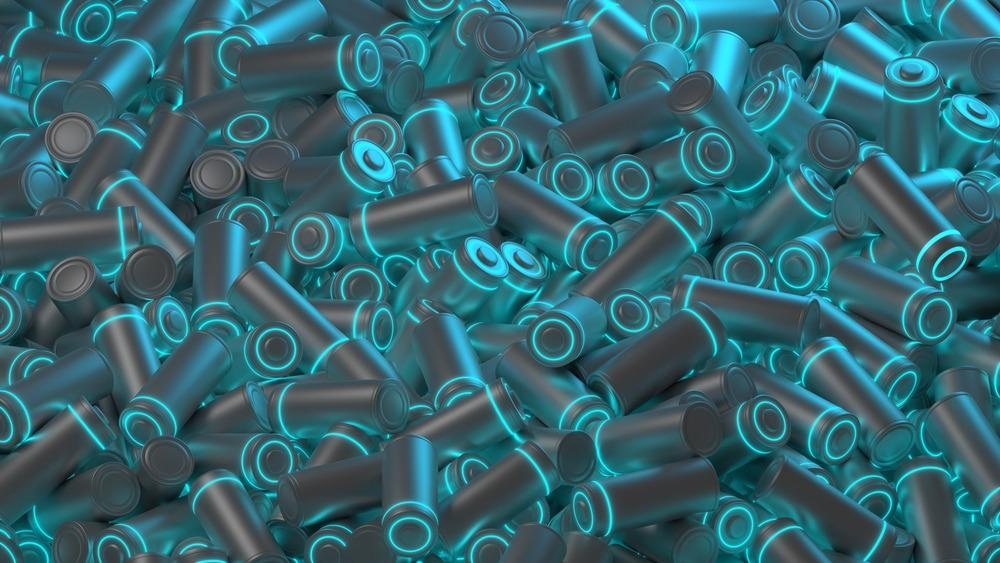An article recently published in the journal Materials Today Nano discusses the development of modified Keggin and Dawson type Polyoxometalates (POMs) to improve the performance of Li-S batteries.

Study: Effective polysulfide adsorption and catalysis by polyoxometalate contributing to high performance Li-S batteries. Image Credit: RESTOCK images/Shutterstock.com
Although lithium-sulfur (Li-S) batteries are promising energy storage systems, they still suffer from a few drawbacks, including the migration of soluble lithium polysulfides (LiPS) intermediates, severe volume change, and low conductivity of sulfur.
Li-S Batteries as Energy Storage Systems
Increasing energy demand calls for high energy storage technology. Li-S batteries have high energy density and high specific capacity making them highly valued energy storage systems. Moreover, the cost-efficiency and low toxicity of elemental sulfur make it an environment-friendly cathode material, making Li-S batteries a next-generation energy storage system. However, soluble lithium polysulfides (LiPSs; Li2Sx, x = 4-8) causes the “shuttle effect,” leading to low Coulombic efficiency and poor cycle stability. To this end, building the functional interlayer is necessary to improve Li-S battery performance.
POMs are anionic metal oxide clusters with good stability, redox property, and diversity. Hence POMs are extensively used in electrochemistry, catalysis, and energy systems. K3[H3AgIPW11O39].12H2O (silver-substituted Keggin) served as Li-S batterie’s Lewis acid and base catalyst. Silver (Ag(I)) ions in silver-substituted Keggin are used as Lewis acid centers to strengthen the attachment of sulfur (S)-moieties.
(NH4)6V10O28 (NVO) clusters immobilize LiPS by attraction of oxygen (O) atoms of NVO by Li cations of LiPS or by the interaction of vanadium atoms of NVO with sulfur anions of LiPS. However, the application of POMs as Li-S battery interlayer for shuttle inhibition is rarely reported, and the mechanism behind the inhibition remains unclear.
Interlayers for Li-S Batteries
In the present study, the team designed three types of Li-S batteries with Keggin or Dawson-type POMs as interlayers. They observed that the cells with H3[PW12O40]. xH2O (PW12) interlayer had higher LiPS binding energy and represented better cycle performance than K6[P2W18O62].14H2O (P2W18) interlayer. The adsorption ability of (NH4)6[P2Mo18O62].11H2O (P2Mo18) towards LiPS is higher than P2W18. The cells containing P2Mo18 as interlayer had a better electrochemical performance. PW12 exhibited catalytic function on LiPS, thus promoting Li2S/LiPS conversion.
Research Findings
Scanning electron microscope (SEM) images of PW12 particles reveal the uniform surface of this interlayer without any agglomeration, suggesting that PW12 has sufficient dispersion on the separator. The interlayer did not show any visible cracks during the folding process, suggesting its ruggedness and structural flexibility, and the interlayer had a thickness of 5 micrometers.
The elemental mapping of the PW12 interlayer showed an even distribution of phosphorous (P), W, O, and carbon (C) elements, and Fourier transform infrared spectroscopy (FTIR) of bare PW12 showed absorption peaks of P–Oa, W–Oc–W, W=Od, W–Od–W at 1081.8, 983.5. 889.0 and 804.1 centimeter inverse, respectively.
X-ray photoelectron spectroscopy (XPS) revealed the chemical bonding and elemental composition of the prepared PW12 interlayer. The peak position of 134.6 electronvolts in XPS spectra aligns with the binding energy of P 2p. Moreover, the peaks at 36.2 and 38.3 electronvolts were assigned to W 4f7/2 and W 4f5/2, respectively, and those at 532.6 and 531.3 electronvolt in O 1s spectra correspond to the surface adsorbed O-O species of Keggin structure.
Electrolyte dripped on polypropylene (PP) separator and PW12 interlayer helped in contact angle tests, and results showed that the contact angle of PW12 was less than the PP separator. This test confirmed that rich voids of PW12 interlayer increase the electrolyte’s wettability, which facilitates lithium-ion mobility.
Subsequently, the evaluation of electrochemical performance for Li-S batteries containing POMs interlayers and C-zinc oxide (ZnO)/S cathode revealed that the PW12 interlayer had a higher capacity of 1607.8 milliampere hour per gram and the lowest polarization voltage (ΔE) of 165.9 millivolts than P2W18 and P2Mo18. These experimental results indicated the enhanced catalytic activity and rapid reaction kinetics of PW12.
The cyclic voltameter curves of PW12-containing cell at cyclic voltammetry of 0.1 millivolts per second showed two reduction peaks at 2.28 and 2.05 volts, indicating the reduction of S to Li2Sx (4 ≤ x ≤ 8), followed by conversion into solid-state Li2S2/Li2S electrochemically. Moreover, the peak at 2.39 volts indicated the oxidation of Li2S2/Li2S to Li2Sx and S.
Conclusion
In summary, the researchers designed PW12, P2W18, and P2Mo18 interlayers containing Li-S batteries, and PW12 exhibited strong chemical interactions, effective catalytic activity for LiPSs, and low redox potentials, presenting the best electrochemical performance. Moreover, PW12 had an outstanding reversible capacity of 1032.7 milliampere hour per gram after 100 cycles.
The adsorption capacity of P2Mo18 to LiPSs is greater than P2W18. However, the cell with a P2W18 interlayer displayed superior electrochemical performance. This work demonstrated the efficiency of POMs as interlayer materials for Li-S batteries.
Reference
Song, J., Jiang, Y., Yizhong Lu, Wang, M., Linlin Fan, Y. C., Liu, H., and Gao, G. (2022). Effective polysulfide adsorption and catalysis by polyoxometalate contributing to high-performance Li-S Batteries. Materials Today Nano. https://www.sciencedirect.com/science/article/pii/S2588842022000591
Disclaimer: The views expressed here are those of the author expressed in their private capacity and do not necessarily represent the views of AZoM.com Limited T/A AZoNetwork the owner and operator of this website. This disclaimer forms part of the Terms and conditions of use of this website.